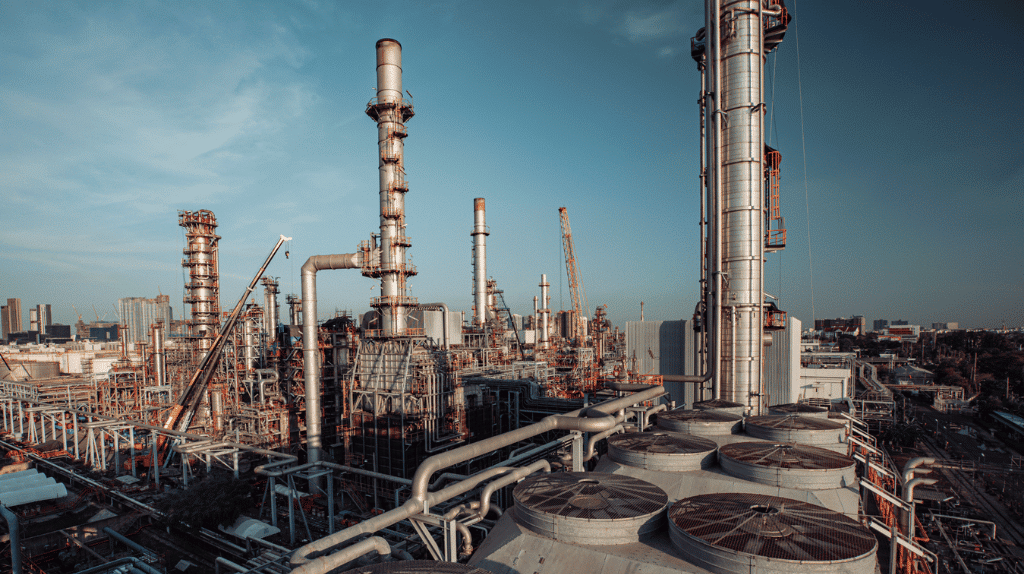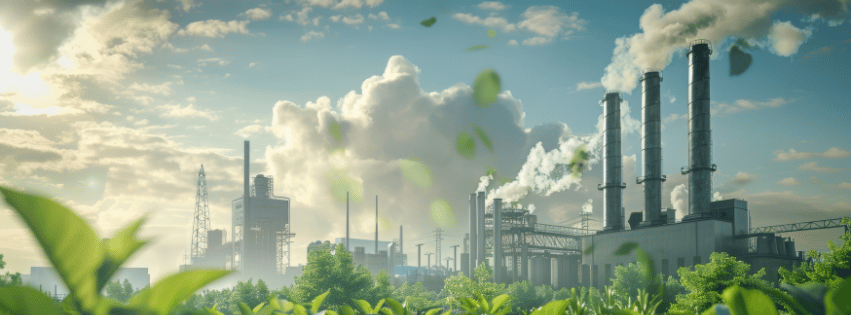As 2025 unfolds, energy companies and their supply chains continue to navigate an era of profound transformation. Political and regulatory shifts, evolving energy policies, new trade tariffs and the growing influence of artificial intelligence all contribute in driving an increased demand for energy and reshaping all aspects of the work experience. Emerging risks in key sourcing and production regions are adding further pressure on energy businesses. At the same time, previous commitments made on issues like sustainability, net-zero goals and fair labor practices are increasingly threatened by these political and economic realities. Yet, consumer and investor expectations remain unwavering, demanding that energy companies both meet the growing supply demand and maintain their social and environmental practices. Here are five key trends that will further define supply chain sustainability in the energy sector for the remainder of the year.
1) A Growing Gap Between Ambitions and Performance
In recent years, businesses and governments have set ambitious sustainability targets, leading to heightened scrutiny, regulatory enforcement and evolving stakeholder expectations. Despite these commitments, investigative reports continue to uncover malpractice, revealing a disconnect between ambition and action.
One of the biggest challenges businesses face is translating sustainability goals into tangible outcomes that align with core business goals. This can be due to the growing complexity of varying international regulations or limited supplier visibility e.g. in both fossil fuels and solar supply chains. The result? Confusion, compliance delays and, in some cases, companies scaling back sustainability targets under economic and political pressures.
Compounding this issue is a flood of supply chain data. While businesses now have access to more information than ever before, many lack the tools or expertise to derive meaningful insights, leading to decision paralysis.
To bridge this gap, energy businesses must prioritize proactive risk management, build stronger supplier relationships, more accountability with intermediaries and improve data and risk analysis capabilities to drive meaningful change.
2) Labor Risks in Unexpected Markets
If 2024 taught us anything, it’s that labor risks aren’t confined to traditionally high-risk markets. Health and safety risks are well known to the energy sector. But issues such as forced labor, child labor and wage exploitation can also persist across all manufacturing regions — including those previously considered low risk. In energy supply chains, this includes in coal mining, minerals supply chains (e.g. cobalt, lithium or uranium mining) as well as during the installation, construction and decommissioning processes.
According to LRQA’s 2024 Supply Chain Risk Outlook report, which analyzed data from over 25,000 global audits, more than half of assessed regions are classified as high or extreme risk for sustainability violations. Countries including Australia, South Africa, Saudi Arabia, the United Arab Emirates and the US — key energy sourcing regions — have moved into higher risk categories, reinforcing the need for constant vigilance.
Traditional annual audits are no longer sufficient in such a dynamic landscape. They provide only a snapshot in time, failing to capture more complex, systemic issues such as inadequate grievance mechanisms and unfair wages. To address this, businesses must invest in real-time risk monitoring and grievance systems to uncover hidden risks before they escalate.
Companies that proactively identify and address these risks will build stronger, more resilient and responsible supply chains.
3) US Policy Changes Introduce New Hurdles
Shifts in political leadership and trade policies are reshaping the risk landscape for global supply chains. In the US, the second administration of President Donald Trump has already begun introducing stricter immigration policies, continued anti-ESG rhetoric and a raft of tariffs on international trade. This complicates the operating environment for businesses.
In response, many manufacturers (including for components, equipment and raw materials) are likely to re-evaluate their sourcing strategies. While some may opt for reshoring, others will pivot to less well-regulated emerging markets, increasing the risk of labor rights violations and supply chain transparency challenges.
Domestically in the US, restrictive immigration policies could further impact foreign migrant workers, potentially driving an increase in informal employment and worker exploitation. To mitigate these risks, businesses must focus on responsible recruitment practices, robust grievance mechanisms and stronger supplier partnerships.
Despite these political headwinds, global momentum for supply chain sustainability remains strong; even with the advent of the EU Omnibus movement and US federal policies. The EU’s Corporate Sustainability Reporting Directive continues to drive investor demand for responsible sourcing, while state-level US policies, such as California’s Climate Corporate Data Accountability Act, are mandating emissions disclosures.
4) A Ripple Effect of Regulation
By late 2024, supply chain due diligence laws were expanding beyond traditional concerns such as forced labor and emissions, encompassing issues like biodiversity and deforestation. This has immediate implications for the energy supply chain, much of which is still associated with mining activities and subject to national land-use policies.
The European Union Deforestation Regulation now requires businesses to assess their supply chain environmental impacts, pushing sustainability professionals to adopt a more integrated approach that considers biodiversity preservation.
However, limited data in this area presents challenges. The 2023 Nature Benchmark report revealed that many companies still fail to recognize the interconnectedness of business operations, environmental impact and human rights concerns.
These evolving regulations don’t just affect multinational corporations. They have a trickle-down effect on small-to-medium enterprises (SMEs) as larger brands impose stricter compliance requirements.
Although SMEs may not be directly subject to legislation such as the Corporate Sustainability Due Diligence Directive, they must increasingly align with higher transparency and risk management standards to remain competitive as suppliers.
For SMEs, embracing ESG improvements is no longer optional. It’s a pathway to securing contracts with larger organizations seeking to reduce supply chain risks.
5) High Quality Data Informs Deeper Engagement
High-quality data is the cornerstone of responsible sourcing and effective supply chain management. Yet, many businesses still struggle with fragmented or unreliable data, making it difficult to monitor risks, detect violations and ensure ethical practices.
To drive operational efficiency and sustainable decision-making, companies must invest in robust risk indicators, which help track performance, identify weak points and benchmark progress against industry standards. This includes deep knowledge of geographic risks, product risks, supply chain structure, adverse media insight and how these can be used to inform a risk-based program design and supplier engagement.
Over recent years, many brands and retailers have adopted more transactional supplier relationships, prioritizing cost efficiency and speed over long-term partnerships. This has weakened supplier bargaining power, created relentless pressure to cut costs and, in some cases, compromised quality and sustainability.
However, short-term savings come at the expense of long-term resilience. The most successful brands will be those that invest in supplier collaboration — aligning on shared goals, optimizing logistics and responding quickly to market changes. This is especially relevant for energy supply chains where demand will continue to grow, and resilience is a critical part of both the national and economic agenda.
The Year Ahead: An Opportunity for Action
Sustainability-focused businesses remain attractive to investors. A Deloitte study found that 83% of investors incorporate sustainability data into their financial analyses, while KPMG reports that 74% of investors say ESG considerations influence their deal strategy — often leading them to pay a premium for companies with mature sustainability programs.
This shift is driving businesses to enhance supply chain due diligence and integrate sustainability into their long-term strategies.
Even if regulations are diluted or delayed, supply chain due diligence is expected by consumers, investors and stakeholders. Compliance fundamentally supports business success, resilience and reputation. While shifting regulations and political instability may disrupt traditional models, energy businesses now have access to more data, technology and best practices than ever before.
To navigate these complexities, energy supply chain leaders must focus on data quality, supplier collaboration and proactive risk management — embedding sustainability not just as a compliance exercise but as a core business strategy.
Kevin Franklin is the chief product officer for leading global assurance partner LRQA. The views expressed in this article are those of the author.
By: Kevin Franklin, Energyintel / Mar 24, 2025.










